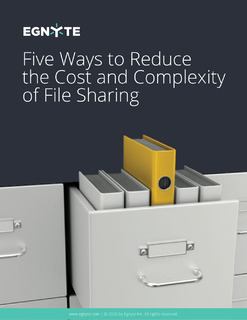There are two ways a legacy technology solution gets retired. Gradually, and all of sudden.
No one likes outdated file servers. Employees dislike their clunky, unfriendly user experiences compared to more modern, cloud-first tools. For IT, file servers present nightmares for user administration, backup and archiving, and data lifecycle and multisite management. They also tend to host many security and privacy gaps. And when your workers are driven to unapproved — and insecure — consumer file services, your risk of data breaches and penalties from regulatory non-compliance essentially doubles.
Yet for a long time, many companies have justified getting by with legacy file-sharing solutions cobbled together with other equally-outdated technologies (FTPs, VPNs, email attachments, etc.).
Then, COVID-19 hit. Suddenly, fully-distributed and remote workforces became the new normal – and there is no going back to the way things were. According to Gartner, 74 percent of businesses plan on transitioning workers to permanent remote status in 2020.

